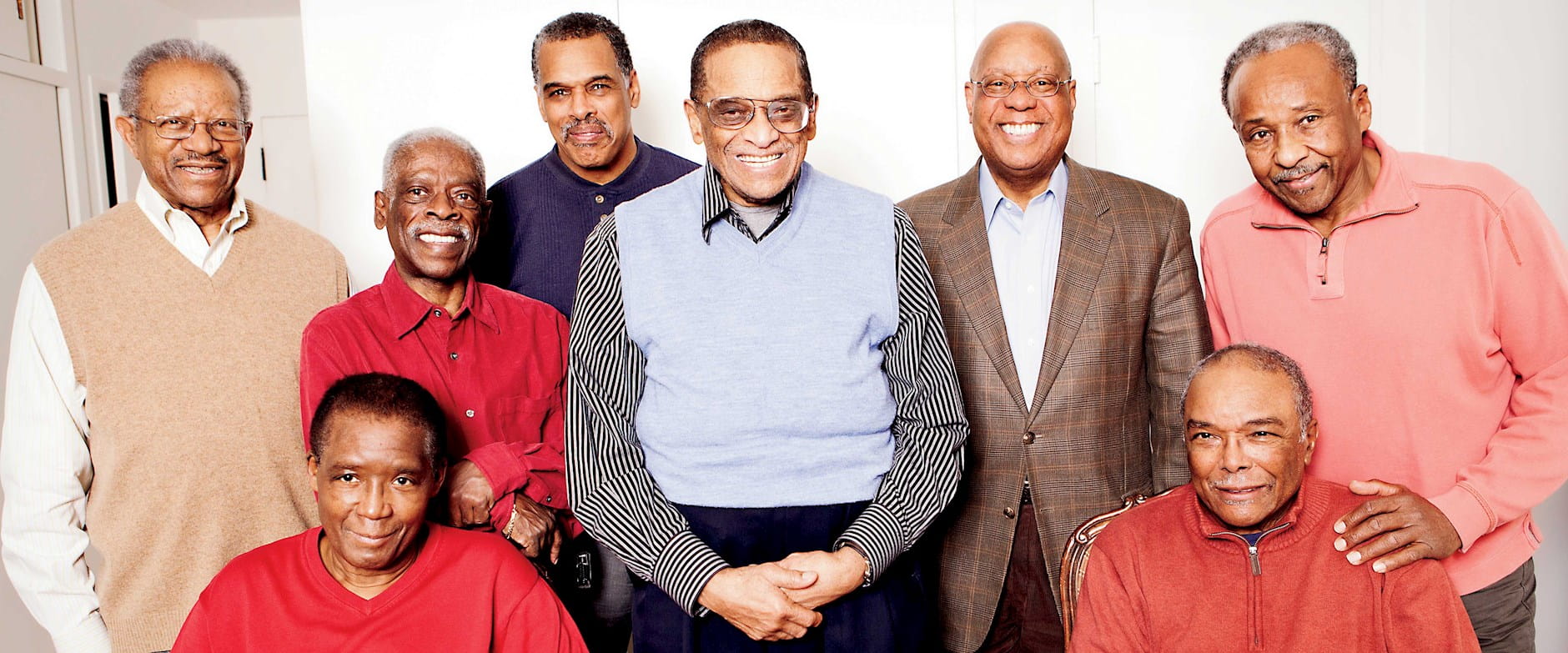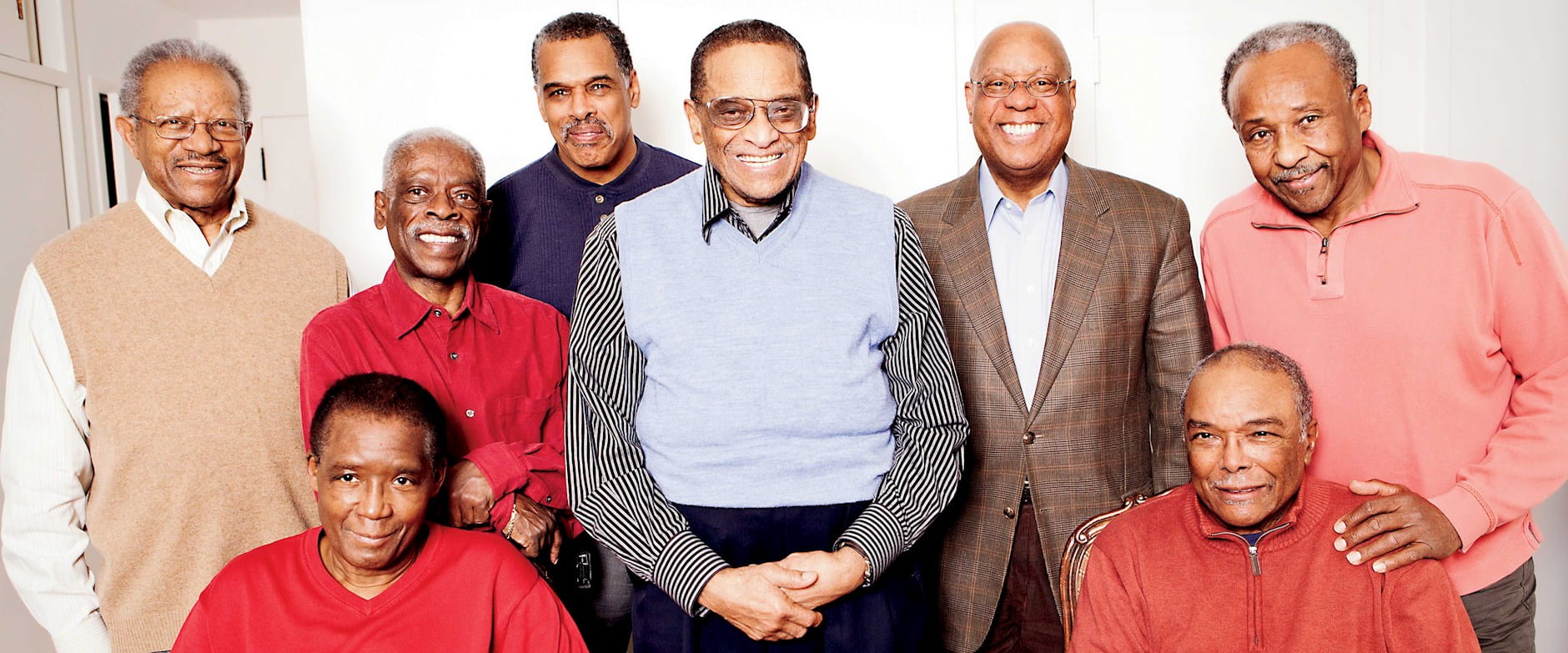
Toasting the Next Generation of Craft Spirits
Tom Jensen, ’87, went from distributing alcohol to distilling it—and explains why small-batch whiskey should be on the tip of everyone’s tongue.
Toasting the Next Generation of Craft Spirits
In the early 1960s James Hill Jr., ’67, was an accountant at the Union Carbide company in Niagara Falls, New York. He liked the work but felt stymied doing the same assignment over and over while his white colleagues rotated projects, learning new things. When Hill complained, his boss congratulated him on his outstanding work and gave him a small raise—avoiding the issue in question.
“I thought to myself, ‘I have to get out of here. I have no future.’” He applied to business schools, and got in to several places. He was still undecided about where to go when he attended a wedding in Detroit, and a fraternity brother offered counsel and a ride to Chicago’s Hyde Park so that he could visit the campus. There, he met with then dean of students Harold R. “Jeff” Metcalf, AM ’53, and Metcalf was able to get him the support he needed to attend. With that, he made his decision to come to Booth.
Around the same time, Alexander Gabbin, ’70, was working at the Federal Reserve Bank of Richmond, in its Baltimore office. He was a 1967 graduate of Howard University employed to—no joke—burn money. Meanwhile, his white colleagues, none of whom had gone to college, were on the management track. “That got my attention,” he recalled. Gabbin commiserated with a friend, who suggested joining him at business school.
Much like recent demonstrations against police brutality and inequity, the late 1960s was a time of turmoil in the United States, with anti-war demonstrations and protests against racism around the country. Black students pressured elite universities to allow them in, and were admitted, and Black professionals worked in major corporations, but even then, their numbers were small. Hill and Gabbin got to thinking: We received the opportunity to go to business school, but what about others? “It was not just about us,” said Hill. “It was: How do we get black individuals, and the community, to the table?”
With that, Gabbin and two others hatched the National Black MBA Association, which is now in its 50th year, with 20,000 members in 39 chapters coast to coast. It provided $1 million in scholarships to members in 2019.

Photo: Black MBA students at Booth in the late 1960s and early ’70s were instrumental in founding what is now the National Black MBA Association. Several met for a gathering in late 2014, including: (standing, left to right) Arthur Dotson, ’70; Clyde Proctor, ’69; Alexander Gabbin, ’70; Ken Hennings, ’70; Calvin Baker, ’69; James Morris, ’70; (seated, left to right), James Hill Jr., ’67; and Gene Armstrong, ’69.
Hill, who attended the first NBMBAA conference as a recent Booth graduate and later became its auditor, went on to found Mitchell & Titus in Chicago, the largest Black accountancy in the nation, which he sold 10 years ago upon his retirement. Gabbin is KPMG Professor and director of the School of Accounting at James Madison University in Harrisonburg, Virginia.
In a conversation with Chicago Booth Magazine, Hill and Gabbin discussed that momentous time.
CBM: There are countless affinity groups these days. Typically, they tackle a problem, and the group fizzles after a few years. What did you learn, early on, that suggested the longevity of NBMBAA?
Gabbin: It was not a “one and done” conference. Our first success was getting black MBA students together, from west and east and south and north. Over two days in April, we brought together 160 attendees, including Black MBA student delegates from 29 MBA programs. All of a sudden, we weren’t isolated. We explored what we could do, and what we should do, to promote Black inclusion in business. MBA students met again the next year. By 1972 the group was formalized and incorporated. No MBA student dropped the baton; each class carried it forward.
“Individual opportunity wasn’t enough: our goal was to get Black MBAs into a network, to shine a light on what black people could do.”
CBM: That initial conference was held at a time when there were mass protests against the Vietnam War and equal rights demonstrations. What motivated you to organize that first gathering of students?
Hill: It was a shock to me that there were only 11 Black MBA students at Chicago Booth. We had to do something. We had to organize to get more Black people into MBA programs. We were very qualified, and there was a lot of pride. At the same time, there was a lot of turmoil. Martin Luther King Jr. had been assassinated the year before. Individual opportunity wasn’t enough: our goal was to get Black MBAs into a network, to shine a light on what Black people could do.
CBM: What’s different about the recent protests against police brutality and economic inequity?
Gabbin: White people are pissed. In the 1970s, it was a Black problem. Now it’s societal; now it’s white kids saying, “Oh no, you’re not doing that in my country.” There is a connection to what we started and what’s happening now, because we proved Blacks can do well in business. I’m pleased with the role we played.
Hill: With NBMBAA, we created opportunity for Blacks to go to business schools. As graduates, we went into corporate America or started Black-owned businesses, creating new opportunities for Blacks, Hispanics, whites. It’s disheartening to see what’s going on, to see peaceful marches turn ugly.
CBM: Let’s talk nuts and bolts. In 1970, there was no internet, no Facebook, no cheap airfares. How did you find fellow Black MBAs at other schools? How did you get them to Chicago?
Gabbin: My classmates Anthony Jackson, ’70, and George Bradshaw, ’71, chaired the event. I handled the money. They wrote a letter that Dean Metcalf sent to business school deans across the nation. It asked that they identify Black MBAs and share this message: How do we improve our lot? How do we get more Black people in business as entrepreneurs and at the corporate level? What are the roadblocks? How do we do a better job attracting Black students to business schools? The Metropolitan Applied Research Center (MARC) gave us a $10,000 grant, which paid for guests’ travel, lodging, and meals. It was the first network of Black MBAs.
“There was a Black camaraderie among us. We were looking to do something global among Black MBA students.”
CBM: Why business? What did you find at business school that made you insist that others make their way into it?
Hill: Exposure. Most students came from historically Black colleges. Corporations didn’t recruit there, so educated Black people worked for the state or federal government. Public accounting firms wouldn’t hire Black people, so you couldn’t get the hours needed to take the CPA exam. And most of us didn’t have family in business; it wasn’t a way of life. At business school you received exposure to the world. You learned how business works, and not just in theory. It was real exposure to working businesses and people in business. The term networking didn’t exist then, but that’s what it was.
CBM: What was the vibe on campus and in Chicago in those years? Did you feel welcome, engaged?
Gabbin: Overall, society was racist, but the university felt like a cocoon, a place to learn and grow. It was brainy, intellectual, and hospitable to people with talent. The faculty assumed you were serious about study because they were serious about teaching. Professor Sidney Davidson was the cat’s meow. Because of his teaching style, I changed my major to accounting. And when I was graduating, he picked up the phone and arranged for me to interview at Touche Ross & Co. [now Deloitte], a public accounting firm.
CBM: Describe the ripple effect of Black inclusion in the MBA program.
Hill: When I’d tell people I was studying at the University of Chicago, they’d say, “You’re lying, man.” Dean Metcalf made it happen. He took a chance on me. I took a class with professor Robert McKersie. We had to adopt a company and write a paper on it. To find the company, we went to meetings of [Black civil rights organization] Operation Breadbasket. That’s how I met Jesse Jackson, who was at seminary then. Going to those meetings gave us exposure to Black-owned companies: it was good for all of us. I adopted Parker House Sausage Co., a South Side company still in operation.
CBM: How do you feel when you see what you created, when you walk into a jammed NBMBAA conference?
Gabbin: Flat-out blown away. Overwhelmed. Students and professionals in suits and ties, courted by major corporations, banks, and universities—none of us visualized that in 1970. We threw seeds on a path, and look what grew! Sometimes you’re blessed to have done the right thing in spite of yourself. There was a Black camaraderie among us. We were looking to do something global among Black MBA students, to make something happen, to start a conversation that would open business to Black people.
Editor’s Note (February 2022): We are saddened to note that James Hill Jr., ’67, passed away in December 2021.
Editor’s note (July 2020): This article was originally written in early May 2020 and revised in early June before our press deadline to include additional comments. Chicago Booth reaffirms our unwavering commitment to diversity, equity and inclusion, and rejection of racism.

Tom Jensen, ’87, went from distributing alcohol to distilling it—and explains why small-batch whiskey should be on the tip of everyone’s tongue.
Toasting the Next Generation of Craft Spirits
When the pandemic closed offices, Sheila Arora, ’11, took an opportunity to turn full time to her art.
Balancing Logic with Intuition
These three leaders in food and beverage share where they saw opportunities to make an impact.
Three Experts Energize the Food & Beverage Industry